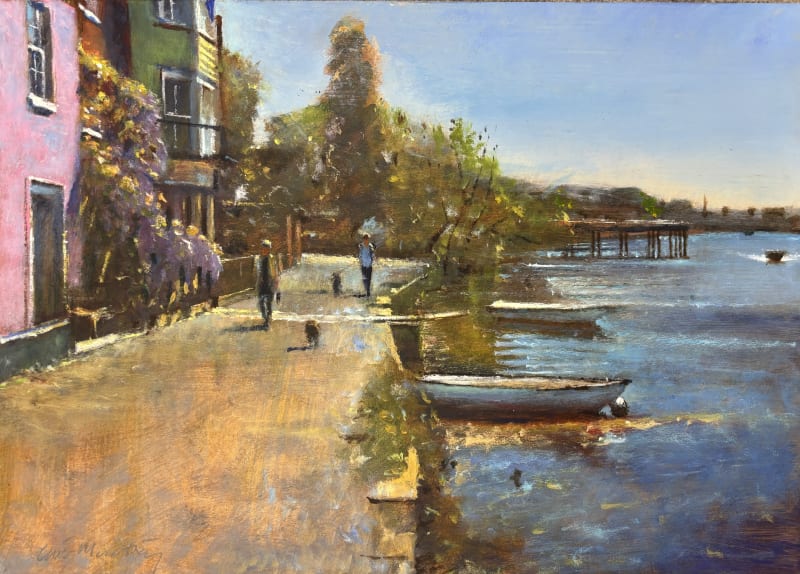Clive McCartney
Clive McCartney is a British painter known for his atmospheric landscapes and compelling depictions of natural and architectural scenes. Born in 1960 in New Delhi, his early exposure to the vivid contrasts and intricate cultures of the East left an indelible mark on his artistic psyche. This exposure, followed by a childhood partly spent in the
sun-drenched realms of Bahrain, forged a painter’s eye that views light not merely as illumination, but as an active, transformative presence within each scene he depicts.
Formally trained at the prestigious Central School of Art and later at Chelsea College of Art in London, McCartney's style has been tempered by rigorous study and association with notable mentors such as Cecil Collins, Patrick Caulfield, and Anthony Wishaw. It was in this environment that McCartney developed his acute sense of composition and atmosphere, with a profound respect for the delicate balance of realism and interpretation. Such discipline, it must be said, is rare in an era that prizes immediacy over contemplation.
To view a McCartney canvas is to be transported into the sinews of the urban landscape itself. His renderings of Paris, Rome, New York, and his own London are works of homage to the historic, almost sacrosanct allure of these cities. Here, McCartney captures not merely the topography but the ineffable mood of a place — that elusive "something" we recognize but rarely name. His palette, a dance of soft ambers, deep indigos, and morning grays, brings forth each location as though viewed through a veil of memory or dream, recalling Turner’s atmospheric scenes but with the exacting geometry of Edward Hopper’s cityscapes.
McCartney’s work is collected internationally, having achieved an almost cult-like reverence among those who seek not the art of shock and disquiet but that of thoughtful appreciation, subtle tension, and an awareness of beauty’s transience. His monograph, *Passport to Paint*, chronicles three decades of McCartney’s ceaseless exploration and continues to cement his place among Britain’s most profound interpreters of the modern city.
